As network infrastructures expand and the demand for high-speed broadband and fiber optic services grows, maximizing conduit space and ensuring flexible, scalable cable installations is more critical than ever. One essential solution leading this evolution is Conducto interior de tela—a modern, space-saving conduit system designed to replace rigid innerducts with a more efficient and cost-effective alternative.
In this comprehensive buyers guide, we’ll explain what fabric innerduct is, its advantages over traditional and MaxCell innerducts, and how to choose the right product for your network installation or infrastructure project.
Table of contents
Comprender el conducto interno de tela
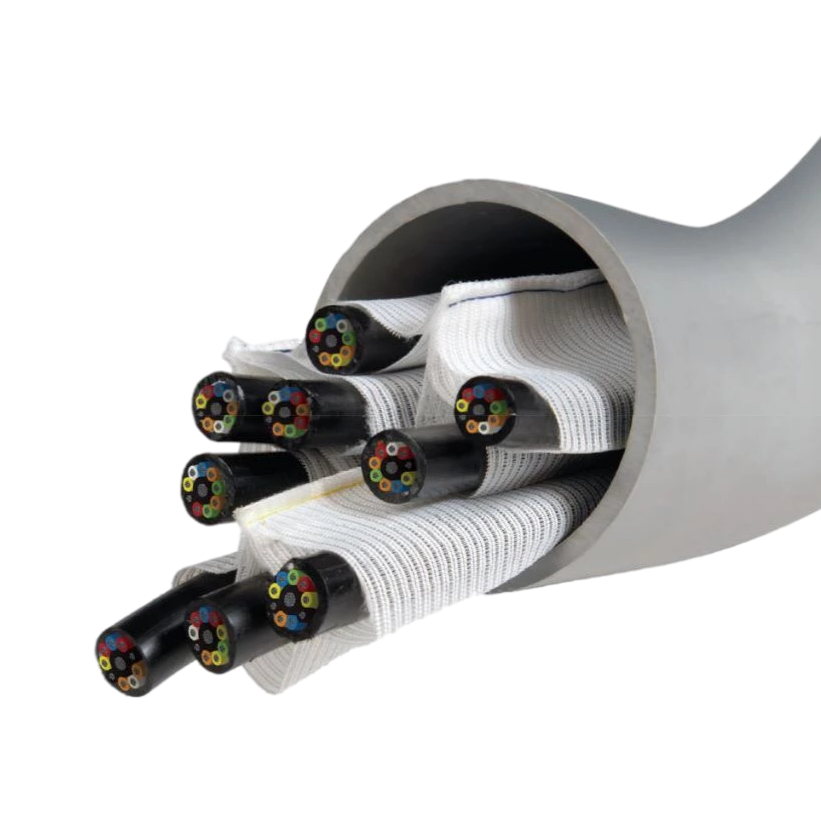
Conducto interior de tela is a flexible, multi-cell conduit pathway system made from durable, woven fabric materials. It’s designed to subdivide existing or new conduit infrastructure, allowing multiple cables—especially fiber optic cables—to be pulled through a single conduit while maintaining separation, protection, and ease of future access.
Unlike traditional rigid HDPE innerducts, fabric innerduct compresses and expands to fit available space, maximizing cable density and minimizing wasted conduit volume.
Características clave
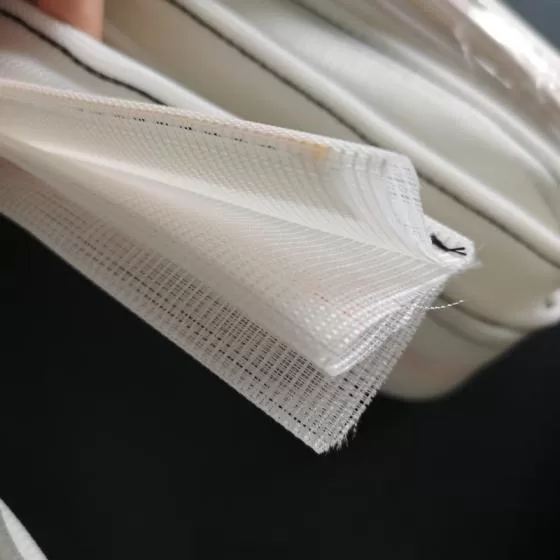
- Space-saving design
Fabric innerduct typically allows 300% more fill capacity compared to rigid duct systems, thanks to its collapsible structure. - Multiple pathways
Most fabric innerducts come in 1-cell, 2-cell, or 3-cell configurations, providing separate lanes for different cables or future installations. - Lightweight and flexible
Easier to handle, transport, and install—ideal for retrofitting congested pathways or making tight bends. - Low-friction interior
Engineered with pull-friendly liners to reduce cable drag and tension during installation. - Durable material
Constructed from high-strength woven polyester or aramid blends that resist tearing, abrasion, and moisture.
Typical Applications
- Fiber to the Home (FTTH) rollouts
- Data center cabling
- Metro fiber deployments
- Underground telecom conduit networks
- Campus and building backbone systems
It’s particularly valuable in crowded conduit scenarios, where additional capacity is needed without expensive trenching or duct enlargement.
Fabric Innerduct vs. MaxCell Innerduct: How Do They Compare?
MaxCell is a well-known brand in the market. However, alternative manufacturers—such as us—offer comparable or superior fabric innerduct products that provide the same functionality at a more competitive price point.
Let’s compare:
| Característica | Our Fabric Innerduct | MaxCell Innerduct |
|---|---|---|
| Material | High-tenacity woven polyester or aramid | Woven polyester |
| Cell Options | 1, 2, 3-cell (custom available) | 1, 2, 3-cell |
| Installation Ease | Lightweight, low-friction liner | Similar |
| Compatibilidad | Works in all conduit sizes (1″–6″) | Sí |
| Customization | OEM colors, lengths, labeling | Limitado |
| Cost Efficiency | More budget-friendly | Higher cost due to brand |
| MOQ & Lead Time | Flexible, fast production | Varies by distributor |
Our conducto interior de tela is designed to be a drop-in replacement for MaxCell, often outperforming in lead time, cost, and customization—without compromising strength or cable protection.
Benefits of Using Fabric Innerduct
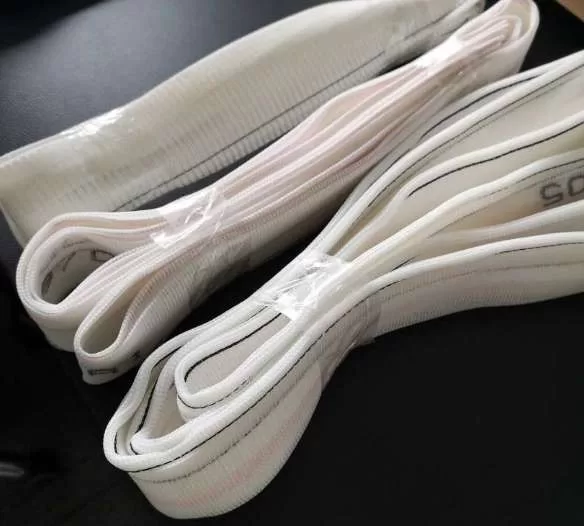
1. Maximized Conduit Space
Traditional HDPE innerducts are rigid and often waste valuable conduit space. In contrast, fabric innerduct collapses when cables aren’t present and expands when needed, using up to 80% less space.
2. Future-Proof Pathways
By subdividing conduit into multiple pathways, fabric innerduct allows you to reserve cells for future cable installations—saving time and trenching costs later.
3. Faster, Safer Cable Installation
With low-friction liners and pre-lubricated options, cables glide smoothly with reduced tension, minimizing risks of damage during installation.
4. Flexible Deployment
Whether you’re dealing with long duct runs, tight curves, or existing congested ducts, fabric innerduct adapts easily to complex layouts without breaking or kinking.
5. Reduced Labor and Shipping Costs
Lightweight spools are easier to transport and handle. Installers appreciate the reduced physical strain and faster deployment time.
How to Choose the Right Fabric Innerduct
1. Cell Configuration
Choose between 1-cell, 2-cell, or 3-cell based on current and future cabling needs. 3-cell is most common for new installations, while 1-cell may be ideal for overlays or upgrades.
2. Conduit Size Compatibility
Ensure the innerduct size matches your conduit (typically 1.25″ to 2″ for most installs). Our products can be tailored to match conduits from 1″ up to 6″.
3. Material Strength
Consider projects that require additional tensile strength or rodent resistance—aramid-reinforced fabric is ideal for these cases.
4. Color Coding & Identification
For large projects, using different colors or custom labeling for each cell or pull length makes identification and future maintenance easier.
Why Choose Our Fabric Innerduct?
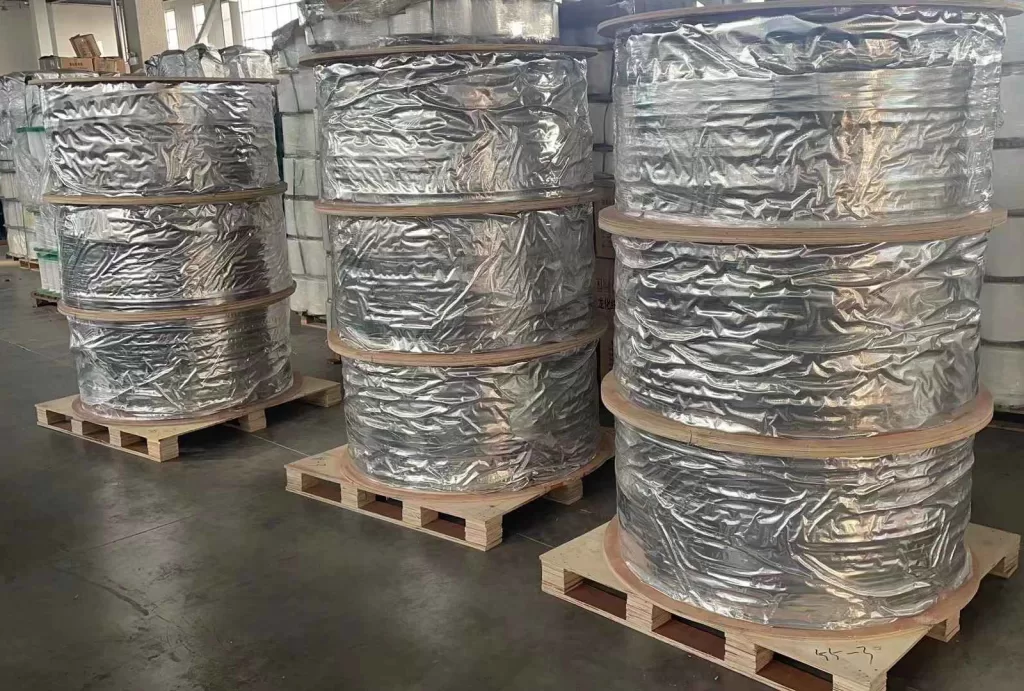
As a direct manufacturer and supplier, we provide premium quality products engineered for the most demanding telecom, fiber, and infrastructure applications. Here’s what sets us apart:
- Customizable Fabric Innerduct with various cell options and materials
- OEM/private label support for ISPs, contractors, and distributors
- Highly competitive pricing—cost-effective alternative to MaxCell
- Fast lead time and global delivery
- Bulk inventory available for urgent project rollouts
Our innerduct has been trusted by fiber optic network builders, data center contractors, and telecom integrators worldwide.
Use Case
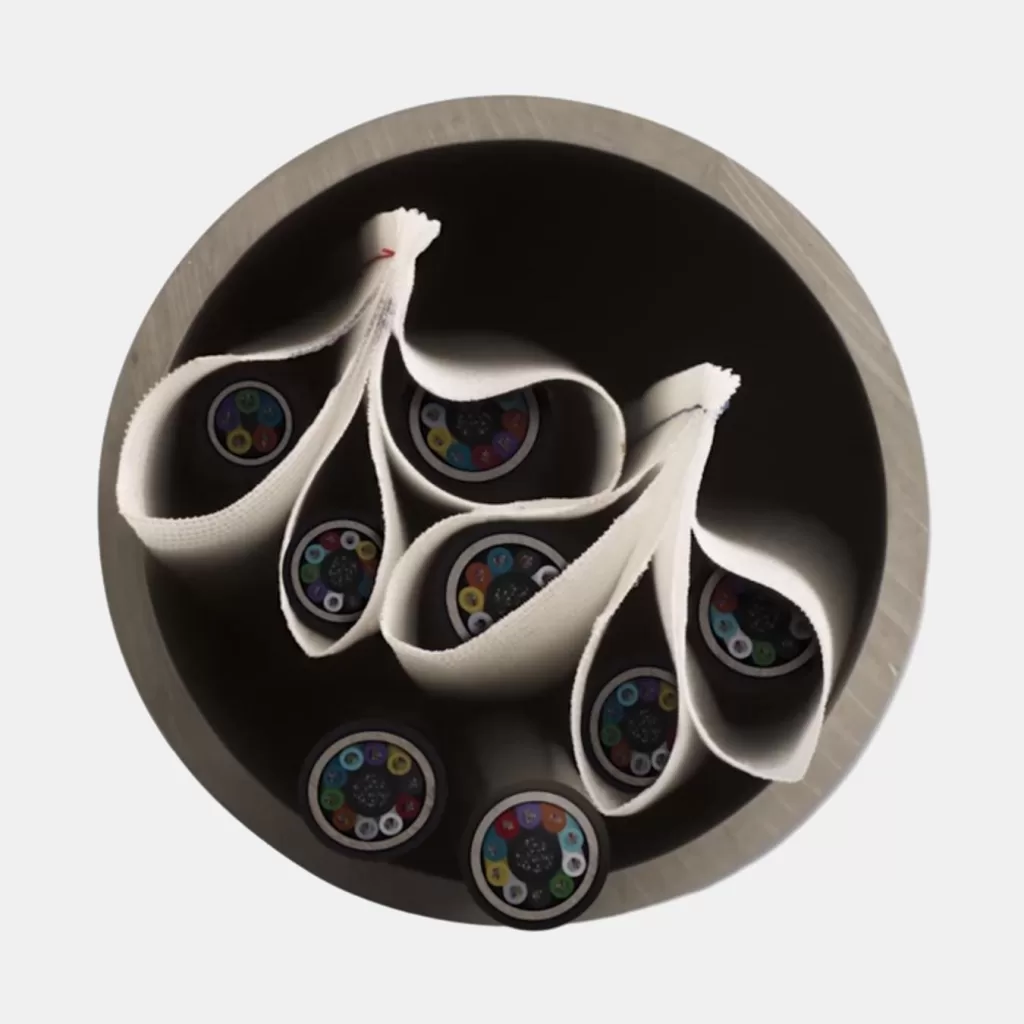
A telecom provider in Spain needed to install new 288-core ribbon fiber in an already crowded 2” underground conduit. Instead of re-trenching or installing additional ductwork, they used our 3-cell fabric innerduct to subdivide the existing pathway and successfully pulled 3 high-count fiber cables—saving 70% in costs and reducing installation time by 60%.
Conclusión
Fabric innerduct is transforming the way fiber and telecom infrastructure is deployed. Its space-saving, cost-effective, and flexible nature makes it the smart choice for modern cable pathway design. Whether you’re retrofitting legacy infrastructure or planning a new high-density fiber deployment, fabric innerduct provides the scalability and performance needed to future-proof your network.
Our fabric innerduct offers a reliable and affordable alternative to MaxCell, backed by years of manufacturing expertise and a proven track record in real-world telecom projects.
Need Samples or Bulk Pricing?
Contact us today to get started with a free quote or free sample.
Our Email: [email protected]
